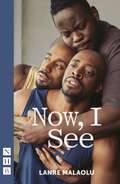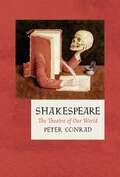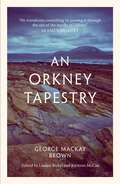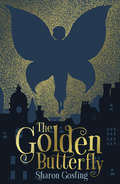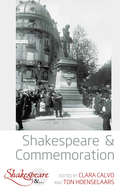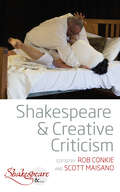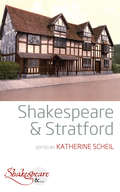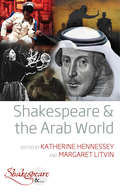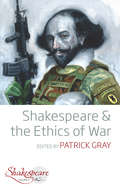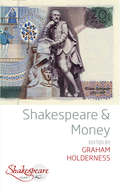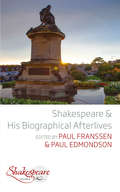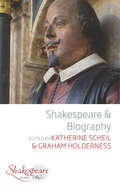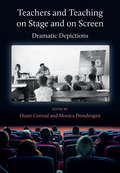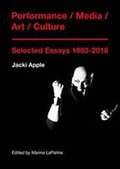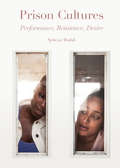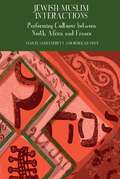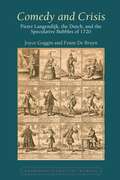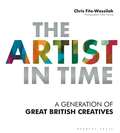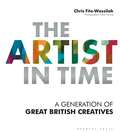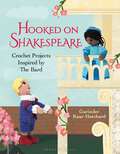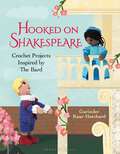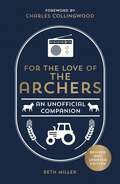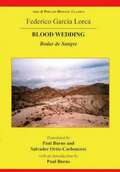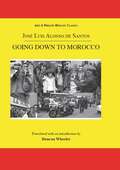- Table View
- List View
Now, I See (Nhb Modern Plays Ser.)
by Lanre MalaoluTwo brothers, long estranged, reunite at a ceremony to honour their lost sibling's life. As they seek to let go, they must confront the past whilst rediscovering the joy that binds them together. A powerful fusion of movement, song and text, Now, I See is an exploration of identity, forgiveness and nature's capacity to heal. It celebrates the profound bond of brotherhood and the resilience that can be found in joy. Now, I See is the second instalment in Lanre Malaolu's groundbreaking trilogy that excavates and celebrates the reality of being a Black man in contemporary Britain. It was premiered at Stratford East, London, in 2024, directed by Malaolu.
Shakespeare: The Theatre of Our World (The Landmark Library #13)
by Peter ConradIn 1623 the actors John Heminges and Henry Condell assembled Mr. William Shakespeare's Comedies, Histories, & Tragedies, better known as The First Folio. In doing so they preserved literature's most dramatically vital and poetically rich account of our human world. Endlessly reinterpreted by critics and performers, Shakespeare's inexhaustible work has remained abreast of contemporary concerns ever since, and it continues to hold a mirror up to the nature of our troubled society and our contradictory selves. The plays accompany us through the ages of mankind, from comic springtime to wintry age, compressing our life in time into the three hours' traffic of the stage; the characters in them have shaped the way we think about politics and war, consciousness and morality, love and death. Peter Conrad examines the world-view of the plays, their generic originality and their astonishingly inventive language. He goes on to explore Shakespeare's global legacy as his characters migrate to every continent and are reinvented by later writers, painters, composers, choreographers and film-makers.
An Orkney Tapestry
by George Mackay BrownFirst published in 1969, An Orkney Tapestry, George Mackay Brown's seminal work, is a unique look at Orkney through the eye of a poet. Originally commissioned by his publisher as an introduction to the Orkney Islands, Brown approached the writing from a unique perspective and went on to produce a rich fusion of ballad, folk tale, short story, drama and environmental writing. The book, written at an early stage in the author’s career, explores themes that appear in his later work and was a landmark in Brown’s development as a writer. Above all, it is a celebration of Orkney's people, language and history. This edition reproduces Sylvia Wishart’s beautiful illustrations, commissioned for the original hardback.Made available again for the first time in over 40 years, this new edition sits alongside Nan Shepherd’s The Living Mountain as an important precursor of environmental writing by the likes of Kathleen Jamie, Robert Macfarlane, Malachy Tallack and, most recently, Amy Liptrot.
The Golden Butterfly
by Sharon GoslingThe Golden Butterfly danced in the air, beautiful and impossible, yet there before their eyes. Then the Magnificent Marko flicked his wand again. There was a shower of sparks, a bang and ... the Golden Butterfly vanished. It's 1897 and since the Magnificent Marko dramatically departed the stage, no magician has come close to performing a trick as spectacular as the Golden Butterfly. With her grandfather gone, Luciana feels that the world has lost its wonder. Then the imposing leader of the Grand Society of Magicians appears, searching for something belonging to Marko, and Luciana is drawn into a world of danger and deception. As she battles to protect her grandfather's greatest legacy, can she distinguish reality from illusion? NOMINATED FOR THE CILIP CARNEGIE MEDAL 2020 A dazzling tale of bravery and friendship in this fast-paced historical adventure for fans of Katherine Woodfine, COGHEART and THE NOWHERE EMPORIUM. "A perfectly paced and wonderfully written tale of mystery and magic... I'm sure this is a book I'll return to with great enjoyment. A fantastic read!” - Sinéad O'Hart, author of THE EYE OF THE NORTH and THE STAR-SPUN WEB
Shakespeare and Commemoration (Shakespeare & #2)
by Clara Calvo Ton HoenselaarsMemory and commemoration play a vital role not only in the work of Shakespeare, but also in the process that has made him a world author. As the contributors of this collection demonstrate, the phenomenon of commemoration has no single approach, as it occurs on many levels, has a long history, and is highly unpredictable in its manifestations. With an international focus and a comparative scope that explores the afterlives also of other artists, this volume shows the diverse modes of commemorative practices involving Shakespeare. Delving into these “cultures of commemoration,” it presents keen insights into the dynamics of authorship, literary fame, and afterlives in its broader socio-historical contexts.
Shakespeare and Creative Criticism (Shakespeare & #4)
by Rob Conkie Scott MaisanoWhat kinds of critical insights are made possible only or especially via creative strategies? This volume examines how creative modes of writing might facilitate or inform new ways to critically engage with Shakespeare. Creative writing, demonstrated in a series of essays, reflections, stories and scenes, operates as a vehicle for exploring and articulating critical and theoretical ideas. In doing so, Shakespeare’s enduring creative and critical appeal is newly understood and critiqued.
Shakespeare and Stratford (Shakespeare & #1)
by Katherine ScheilAs the site of literary pilgrimage since the eighteenth century, the home of the Royal Shakespeare Company and the topic of hundreds of imaginary portrayals, Stratford is ripe for analysis, both in terms of its factual existence and its fictional afterlife. The essays in this volume consider the various manifestations of the physical and metaphorical town on the Avon, across time, genre and place, from America to New Zealand, from children’s literature to wartime commemorations. We meet many Stratfords in this collection, real and imaginary, and the interplay between the two generates new visions of the place.
Shakespeare and the Arab World (Shakespeare & #3)
by Katherine Hennessey and Margaret LitvinOffering a variety of perspectives on the history and role of Arab Shakespeare translation, production, adaptation and criticism, this volume explores both international and locally focused Arab/ic appropriations of Shakespeare’s plays and sonnets. In addition to Egyptian and Palestinian theatre, the contributors to this collection examine everything from an Omani performance in Qatar and an Upper Egyptian television series to the origin of the sonnets to an English-language novel about the Lebanese civil war. Addressing materials produced in several languages from literary Arabic (fuṣḥā) and Egyptian colloquial Arabic (‘ammiyya) to Swedish and French, these scholars and translators vary in discipline and origin, and together exhibit the diversity and vibrancy of this field.
Shakespeare and the Ethics of War (Shakespeare & #5)
by Patrick GrayHow does Shakespeare represent war? This volume reviews scholarship to date on the question and introduces new perspectives, looking at contemporary conflict through the lens of the past. Through his haunting depiction of historical bloodshed, including the Trojan War, the fall of the Roman Republic, and the Wars of the Roses, Shakespeare illuminates more recent political violence, ranging from the British occupation of Ireland to the Spanish Civil War, the Balkans War, and the past several decades of U. S. military engagement in Iraq and Afghanistan. Can a war be just? What is the relation between the ruler and the ruled? What motivates ethnic violence? Shakespeare’s plays serve as the frame for careful explorations of perennial problems of human co-existence: the politics of honor, the ethics of diplomacy, the responsibility of non-combatants, and the tension between idealism and Realpolitik.
Shakespeare and Money (Shakespeare & #7)
by Graham HoldernessThough better known for his literary merits, Shakespeare made money, wrote about money and enabled money-making by countless others in his name. With chapters by leading scholars on the economic, financial and commercial ramifications of his work, this multifaceted volume connects the Bard to both early modern and contemporary economic conditions, revealing Shakespeare to have been a serious economist in his own right.
Shakespeare and His Biographical Afterlives (Shakespeare & #6)
by Paul Franssen & Paul EdmondsonNew Shakespeare biographies are published every year, though very little new documentary evidence has come to light. Inevitably speculative, these biographies straddle the line between fact and fiction. Shakespeare and His Biographical Afterlives explores the relationship between fiction and non-fiction within Shakespeare’s biography, across a range of subjects including feminism, class politics, wartime propaganda, children’s fiction, and religion, expanding beyond the Anglophone world to include countries such as Germany and Spain, from the seventeenth century to present day.
Shakespeare and Biography (Shakespeare & #8)
by Katherine Scheil Graham HoldernessFrom Shakespeare’s religion to his wife to his competitors in the world of early modern theatre, biographers have approached the question of the Bard’s life from numerous angles. Shakespeare & Biography offers a fresh look at the biographical questions connected with the famous playwright’s life, through essays and reflections written by prominent international scholars and biographers.
Teachers and Teaching on Stage and on Screen: Dramatic Depictions
by Diane Conrad Monica PrendergastPortrayals of teachers in stage plays and films abound. This edited anthology brings together scholars in education to seriously reflect upon portrayals of teachers and teaching in theatre and film.
Performance/media/art/culture (PDF): Selected Essays 1983-2018
by Jacki Apple Marina LaPalmaExperience the interdisciplinary performance scene of the 1980s and beyond through the eyes of one of its most compelling witnesses. Jacki Apple’s Performance / Media / Art / Culture traces performance art, multimedia theatre, audio arts, and dance in the United States from 1983 to the present
Prison Cultures: Performance, Resistance, Desire
by Alwyn Walsh Aylwyn WalshPrison Cultures offers the first systematic examination of women in prison and performances in and of the institution. Using a feminist approach to reach beyond tropes of “bad girls” and simplistic inside vs. outside dynamics, it examines how cultural products can perpetuate or disrupt hegemonic understandings of the world of prisons.
Jewish–Muslim Interactions: Performing Cultures between North Africa and France (Francophone Postcolonial Studies #11)
By exploring dynamic Jewish-Muslim interactions across North Africa and France through performance culture in the 20th and 21st centuries, we offer an alternative chronology and lens to a growing trend in media and scholarship that views these interactions primarily through conflict. Our volume interrogates interaction that crosses the genres of theatre, music, film, art, and stand-up, emphasising creative influence and artistic cooperation between performers from the Maghrib, with a focus on Algeria, Tunisia, Morocco, and diaspora communities, notably in France. The plays, songs, films, images, and comedy sketches that we analyse are multilingual, mixing not only with the former colonial language French, but also the rich diversity of indigenous Amazigh and Arabic languages. The volume includes contributions by scholars working across and beyond disciplinary boundaries through anthropology, ethnomusicology, history, sociology, and literature, engaging with postcolonial studies, memory studies, cultural studies, and transnational French studies. The first section examines accents, affiliations, and exchange, with an emphasis on aesthetics, familiarity, changing social roles, and cultural entrepreneurship. The second section shifts to consider departure and lingering presence through spectres and taboos, in its exploration of absence, influence, and elision. The volume concludes with an autobiographical afterword, which reflects on memories and legacies of Jewish-Muslim interactions across the Mediterranean. Contributors: Cristina Moreno Almeida, Jamal Bahmad, Adi Saleem Bharat, Aomar Boum, Morgan Corriou, Ruth Davis, Samuel Sami Everett, Fanny Gillet, Jonathan Glasser, Miléna Kartowski-Aïach, Nadia Kiwan, Hadj Miliani, Vanessa Paloma Elbaz, Elizabeth Perego, Christopher Silver, Rebekah Vince, Valérie Zenatti
Transnational German Studies (Transnational Modern Languages #5)
This volume consists of a series of essays, written by leading scholars within the field, demonstrating the types of inquiry that can be pursued into the transnational realities underpinning German-language culture and history as these travel right around the globe. Contributions discuss the inherent cross-pollination of different languages, times, places and notions of identity within German-language cultures and the ways in which their construction and circulation cannot be contained by national or linguistic borders. In doing so, it is not the aim of the volume to provide a compendium of existing transnational approaches to German Studies or to offer its readers a series of survey chapters on different fields of study to date. Instead, it offers novel research-led chapters that pose a question, a problem or an issue through which contemporary and historical transcultural and transnational processes can be seen at work. Accordingly, each essay isolates a specific area of study and opens it up for exploration, providing readers, especially student readers, not just with examples of transnational phenomena in German language cultures but also with models of how research in these areas can be configured and pursued. Contributors: Angus Nicholls, Anne Fuchs, Benedict Schofield, Birgit Lang, Charlotte Ryland, Claire Baldwin, Dirk Weissmann, Elizabeth Anderson, James Hodkinson, Nicholas Baer, Paulo Soethe, Rebecca Braun, Sara Jones, Sebastian Heiduschke, Stuart Taberner and Ulrike Draesner.
Comedy and Crisis: Pieter Langendijk, the Dutch, and the Speculative Bubbles of 1720 (Eighteenth-Century Worlds #9)
Comedy and Crisis contains the first ever scholarly English translation of Pieter Langendijk’s Quincampoix, or the Wind Traders [Quincampoix of de Windhandelaars], and Harlequin Stock-Jobber [Arlequin Actionist]. The first play is a full-length satirical comedy, and the second is a short, comic harlequinade; both were written in Dutch in response to the speculative financial crisis or bubble of 1720 and were performed in Amsterdam in the fall of 1720, as the bubble in the Netherlands was bursting. Comedy and Crisis also contains our translation of the extensive apparatus prepared by C.H.P. Meijer (Introduction and notes) for his 1892 edition of these plays. The current editors have updated the footnotes and added six new critical essays by contemporary literary and historical scholars that contextualize the two plays historically and culturally. The book includes an extensive bibliography and index. The materials assembled in Comedy and Crisis are a rich resource for cultural, historical, and literary students of the history of finance and of eighteenth-century studies.
The Artist in Time: A Generation of Great British Creatives
by Chris Fite-WassilakThe Artist in Time brings together twenty creatives from across the UK, with photographs and interviews that disclose their daily working habits and motivations. All born before 1950, this is a collective portrait of a generation who have shaped our artistic landscape. They provide a range of different answers to the question 'what makes an artist?', and a set of insights into what makes up a creative life. Giving the reader access to the studio and working spaces of a diverse group of painters, poets, choreographers, filmmakers, illustrators, musicians, photographers, sculptors, writers and creators, The Artist in Time is a handbook for creativity and inspiration, made up of artists from all backgrounds who have all in their own way shaped, and continue to shape, the creative landscape of the United Kingdom.
The Artist in Time: A Generation of Great British Creatives
by Chris Fite-WassilakThe Artist in Time brings together twenty creatives from across the UK, with photographs and interviews that disclose their daily working habits and motivations. All born before 1950, this is a collective portrait of a generation who have shaped our artistic landscape. They provide a range of different answers to the question 'what makes an artist?', and a set of insights into what makes up a creative life. Giving the reader access to the studio and working spaces of a diverse group of painters, poets, choreographers, filmmakers, illustrators, musicians, photographers, sculptors, writers and creators, The Artist in Time is a handbook for creativity and inspiration, made up of artists from all backgrounds who have all in their own way shaped, and continue to shape, the creative landscape of the United Kingdom.
Hooked on Shakespeare: Crochet Projects Inspired by The Bard (Hooked On...)
by Gurinder Kaur Hatchard15 projects featuring more than 30 step-by-step designs inspired by the works of William Shakespeare.This fabulous collection of creations ranges from the iconic Romeo and Juliet to Hamlet and the Ghost, and from the Three Witches from Macbeth to Bottom and Titania from A Midsummer Night's Dream. Not forgetting the one and only Woolliam Shakespeare himself.Each project features an introduction to the play and its characters, followed by colourful step-by-step instructions. The easy-to-make designs include fully illustrated stitch basics, perfect for beginning crocheters as well as advanced crochet enthusiasts.
Hooked on Shakespeare: Crochet Projects Inspired by The Bard (Hooked On...)
by Gurinder Kaur Hatchard15 projects featuring more than 30 step-by-step amigurumi inspired by the works of William Shakespeare.This fabulous collection of creations ranges from the iconic Romeo and Juliet to Hamlet and the Ghost, and from the Three Witches from Macbeth to Bottom and Titania from A Midsummer Night's Dream. Not forgetting the one and only Woolliam Shakespeare himself.Each project features an introduction to the play and its characters, followed by colourful step-by-step instructions. The easy-to-make designs include fully illustrated stitch basics, perfect for beginning crocheters as well as advanced crochet enthusiasts.
For the Love of The Archers: An Unofficial Companion: Revised and Updated
by Beth Miller Charles CollingwoodA revised and updated edition of the bestselling guide to all things Ambridge, For the Love of the Archers contains extensive all-new content that will keep any fan of the show enlightened and entertained.It’s been over 70 years since the familiar dum-di-dum-didum-di-dum of “Barwick Green” first brought The Archers to our airwaves, and in that time millions of listeners have followed the everyday lives of country folk in Ambridge.Bringing together a wealth of fascinating facts, amusing insights and expert trivia about characters, controversies and country customs in one handy volume – now fully revised and updated to include recent developments – this companion is the perfect gift for avid addicts and keen newcomers alike.Long-time Archers super-fan Beth Miller will be your highly engaging guide to every aspect of radio’s most enduring drama, including the following recurring features:Welcome to Ambridge takes you on a tour of all the key locationsMeet the Characters profiles all your favourite personalitiesMemorable Moments celebrates some of the most entertaining and emotional episodesGone But Not Forgotten remembers the dearly departedQuiz Night at the Bull tests your knowledge of the programme at regular intervalsFor all this and much more, dive into this incredible miscellany and become a true Ambridge expert.
Lorca: Blood Wedding (Aris & Phillips Hispanic Classics)
by Salvador Ortiz-CarboneresFederico Garcia Lorca was born near Granada in 1898. Initially set on studying music in Paris, after his piano teacher died in 1916 he became involved in a literary and artistic group, including H G Wells and Rudyard Kipling. This move towards a more literary life eventually paid off. Blood Wedding (Bodas de Sangre) was written in 1932, and was first performed in Madrid in March 1933. It proved to be the popular and critical success he'd been waiting for. When the play was staged in Buenos Aires he even found himself confronted with the prospect of wealth - a prospect that soon became a reality. This prosperous, happy spell was short-lived though, as the political situation in Spain altered under Franco, putting an end to this time, and ultimately, his life. Lorca was executed on August 18th 1936. Blood Wedding is based around the story of a young woman who, unable to wed her lover is made to marry a more suitable man. On the day of her wedding, however, La Novia (The Bride) runs away with her lover (Leonardo), who is married with children. A series of events ensues... Leonardo is the only character in the play to have a name, the others all being identified by their role: El Novio (The Groom), La Suegra (The Mother-in-Law). As with many of Lorca's plays, symbolism is key, with the moon and death personified. This is the first play in Lorca's trilogy of rural tragedies, with Yerma and The House of Bernarda Alba
Going Down to Morocco (Aris & Phillips Hispanic Classics)
by Jose Luis de SantosGoing Down to Morocco (Bajarse al moro), is one of the most emblematic and best known theatrical work of recent times in Spain. It both contributed to and documented La Movida, a drug-fuelled youth movement that placed Madrid firmly on the global cultural map in the early 1980s. Alonso de Santos' play, a commercial and critical success when first staged in 1985, was made into a film starring Antonio Banderas in 1989. Chusa, a free-spirited and spontaneously generous young drug smuggler introduces Elena, a middle-class runaway, to the apartment she shares with her cousin Pepito and her boyfriend Alberto, a rookie policeman. The result is chaos in their previously disorderly but happy life. The comedy explores opposing lifestyles of young people in 1980s Spain, during a period of radical social change. It is characterised by humour, creative use of contemporary slang, and intertextual film references. Duncan Wheeler's translation of the original play marks with footnotes the changes made in the new version done in 2008 for a high-profile revival to celebrate its twenty-fifth anniversary. This edition also includes an unpublished interview conducted by Duncan Wheeler with Alonso de Santos in 2010.
